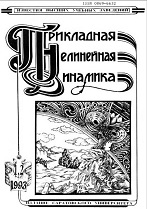|
This article is cited in 1 scientific paper (total in 1 paper)
APPLIED PROBLEMS OF NONLINEAR OSCILLATION AND WAVE THEORY
Using a mathematical model of cardiovascular system for preparing surrogate data for testing methods of phase synchronization analysis
E. I. Borovkovaabc, J. M. Ishbulatovabc, A. N. Hramkova, A. S. Karavaevabc
a Saratov State University, Russia
b Science Research Institute of Cardiology of Saratov State Medical University n.a. V. I. Razumovsky, Russia
c Saratov Brunch of Kotelnikov Institute of Radioengineering and Electronics, Russia
Abstract:
The aim of present research is refinement of the parameters and statistical properties of methods for diagnosing phase synchronization areas based on the dependence of the instantaneous phase difference of oscillations on time. Methods. Two methods are compared that allow one to identify of synchronization modes based on the dependence of the instantaneous phase difference of oscillations on time: a method based on an estimate of the phase coherence coefficient and a method based on a linear approximation of the instantaneous phase difference in a sliding window and an estimate of the slope of the approximating straight line. The phase synchronization of the low-frequency (0.04–0.15 Hz) components of the time series of interbeat intervals and blood pressure is analyzed. A mathematical model of the cardiovascular system is used to generate an ensemble of test data when analyzing the statistical properties of methods of phase synchronization analysis and refining their parameters. Test data is generated by modulating the coupling parameters between the autonomic control loops of blood circulation in the model, providing the known presence and absence of synchronization modes. Results. During the analysis of the model data, the values of the method parameters were refined. The sensitivity and specificity of the methods were evaluated. A higher sensitivity of the previously proposed method for detecting phase synchronization intervals in the analysis of non-stationary time series of the cardiovascular system is shown. Conclusion. In the analysis of non-stationary time series of the cardiovascular system shown the higher sensitivity of the method for detecting phase synchronization intervals, what based on a piecewise linear approximation of the instantaneous phase difference in a sliding window and an estimate of the slope of the approximating straight line.
Keywords:
phase synchronization, mathematical model, low frequency, autonomic control, heart rate variability, blood pressure, sensitivity, specificity, receiver-operating-characteristic curve.
Received: 01.11.2020
Citation:
E. I. Borovkova, J. M. Ishbulatov, A. N. Hramkov, A. S. Karavaev, “Using a mathematical model of cardiovascular system for preparing surrogate data for testing methods of phase synchronization analysis”, Izvestiya VUZ. Applied Nonlinear Dynamics, 29:3 (2021), 356–364
Linking options:
https://www.mathnet.ru/eng/ivp419 https://www.mathnet.ru/eng/ivp/v29/i3/p356
|

| Statistics & downloads: |
| Abstract page: | 70 | | Full-text PDF : | 17 |
|




 Contact us:
Contact us: Terms of Use
Terms of Use
 Registration to the website
Registration to the website Logotypes
Logotypes








 Citation in format
Citation in format 
